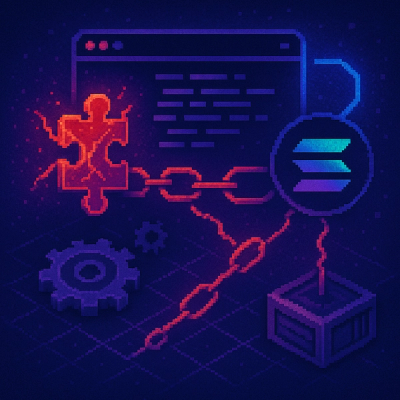
Security News
Scaling Socket from Zero to 10,000+ Organizations
Socket CEO Feross Aboukhadijeh shares lessons from scaling a developer security startup to 10,000+ organizations in this founder interview.
@aws-sdk/client-transcribe-streaming
Advanced tools
AWS SDK for JavaScript Transcribe Streaming Client for Node.js, Browser and React Native
Amazon Transcribe streaming enables you to send an audio stream and receive back a stream of text in real time. The API makes it easy for developers to add real-time speech-to-text capability to their applications. It can be used for a variety of purposes. For example:
The JavaScript SDK Transcribe Streaming client encapsulates the API into a JavaScript library that can be run on
browsers, Node.js and potentially React Native. By default, the client uses HTTP/2 connection on Node.js, and uses
WebSocket connection on browsers and React Native.
To install the this package, simply type add or install @aws-sdk/client-transcribe-streaming using your favorite package manager:
npm install @aws-sdk/client-transcribe-streamingyarn add @aws-sdk/client-transcribe-streamingpnpm add @aws-sdk/client-transcribe-streamingIn the sections bellow, we will explain the library by an example of using startStreamTranscription method to
transcribe English speech to text.
If you haven't, please read the root README for guidance for creating a sample application and
installation. After installation, in the index.js, you can import the Transcribe Streaming client like:
// ES5 example
const { TranscribeStreamingClient, StartStreamTranscriptionCommand } = require("@aws-sdk/client-transcribe-streaming");
If require is not available on the platform you are working on(browsers). You can import the client like:
// ES6+ example
import {
TranscribeStreamingClient,
StartMedicalStreamTranscriptionCommand,
} from "@aws-sdk/client-transcribe-streaming";
You can create a service client like bellow:
const client = new TranscribeStreamingClient({
region,
credentials,
});
// region and credentials are optional in Node.js
The Transcribe Streaming client accepts streaming speech input as an async iterable. You can construct them from either an async generator or using Symbol.asyncIterable to emit binary chunks.
Here's an example of using async generator:
const audioStream = async function* () {
await device.start();
while (device.ends !== true) {
const chunk = await device.read();
yield chunk; /* yield binary chunk */
}
};
Then you need to construct the binary chunk into an audio chunk shape that can be recognized by the SDK:
const audioStream = async function* () {
for await (const chunk of audioSource()) {
yield { AudioEvent: { AudioChunk: chunk } };
}
};
In Node.js you will mostly acquire the speech in Stream API, from HTTP request or devices. Stream API in Node.js (>= 10.0.0) itself is an async iterable. You can supply the streaming into the SDK input without explicit convert. You only need to construct the audio chunk shape that can be recognized by the SDK:
const audioSource = req; //Incoming message
const audioStream = async function* () {
for await (const payloadChunk of audioSource) {
yield { AudioEvent: { AudioChunk: payloadChunk } };
}
};
If you see don't limit the chunk size on the client side, for example, streams from fs, you might see
The chunk is too big error from the Transcribe Streaming. You can solve it by setting the HighWaterMark:
const { PassThrough } = require("stream");
const { createReadStream } = require("fs");
const audioSource = createReadStream("path/to/speech.wav");
const audioPayloadStream = new PassThrough({ highWaterMark: 1 * 1024 }); // Stream chunk less than 1 KB
audioSource.pipe(audioPayloadStream);
const audioStream = async function* () {
for await (const payloadChunk of audioPayloadStream) {
yield { AudioEvent: { AudioChunk: payloadChunk } };
}
};
Depending on the audio source, you may need to PCM encode you audio chunk.
The Transcribe Streaming SDK client also supports streaming from browsers. You can acquire the microphone data through
getUserMedia API. Note that this API is supported by a subset of browsers.
Here's a code snippet of acquiring microphone audio stream using microphone-stream
const mic = require("microphone-stream");
// this part should be put into an async function
micStream.setStream(
await window.navigator.mediaDevices.getUserMedia({
video: false,
audio: true,
})
);
const audioStream = async function* () {
for await (const chunk of micStream) {
yield { AudioEvent: { AudioChunk: pcmEncodeChunk(chunk) /* pcm Encoding is optional depending on the source */ } };
}
};
You can find the a full front-end example here
Currently Transcribe Streaming service only accepts PCM encoding. If your audio source is not already encoded, you need to PCM encoding the chunks. Here's an example:
const pcmEncodeChunk = (chunk) => {
const input = mic.toRaw(chunk);
var offset = 0;
var buffer = new ArrayBuffer(input.length * 2);
var view = new DataView(buffer);
for (var i = 0; i < input.length; i++, offset += 2) {
var s = Math.max(-1, Math.min(1, input[i]));
view.setInt16(offset, s < 0 ? s * 0x8000 : s * 0x7fff, true);
}
return Buffer.from(buffer);
};
const command = new StartStreamTranscriptionCommand({
// The language code for the input audio. Valid values are en-GB, en-US, es-US, fr-CA, and fr-FR
LanguageCode: "en-US",
// The encoding used for the input audio. The only valid value is pcm.
MediaEncoding: "pcm",
// The sample rate of the input audio in Hertz. We suggest that you use 8000 Hz for low-quality audio and 16000 Hz for
// high-quality audio. The sample rate must match the sample rate in the audio file.
MediaSampleRateHertz: 44100,
AudioStream: audioStream(),
});
const response = await client.send(command);
If the request succeeds, you will get a response containing the streaming transcript like this. Just like the input speech stream, the transcript stream is an async iterable emitting the partial transcripts. Here is a code snippet of accessing the transcripts
// This snippet should be put into an async function
for await (const event of response.TranscriptResultStream) {
if (event.TranscriptEvent) {
const message = event.TranscriptEvent;
// Get multiple possible results
const results = event.TranscriptEvent.Transcript.Results;
// Print all the possible transcripts
results.map((result) => {
(result.Alternatives || []).map((alternative) => {
const transcript = alternative.Items.map((item) => item.Content).join(" ");
console.log(transcript);
});
});
}
}
In Node.js, you can pipe this TranscriptResultStream to other destinations easily with the from API:
const { Readable } = require("stream");
const transcriptsStream = Readable.from(response.TranscriptResultStream);
transcriptsStream.pipe(/* some destinations */);
If you are using async...await style code, you are able to catch the errors with try...catch block. There are 2
categories of exceptions can be thrown:
InternalFailureException or ConflictException.For immediate exceptions, the SDK client will retry the request if the error is retryable, like network errors. You can config the client to behave as you intend to.
For streaming exceptions, because the streaming transcription is already started, client cannot retry the request automatically. The client will throw these exceptions and users can handle the stream behavior accordingly.
Here's an example of error handling flow:
try {
const response = await client.send(command);
await handleResponse(response);
} catch (e) {
if (e instanceof InternalFailureException) {
/* handle InternalFailureException */
} else if (e instanceof ConflictException) {
/* handle ConflictException */
}
} finally {
/* clean resources like input stream */
}
This package is compatible with React Native (>= 0.60). However, it is not tested with any React Native libraries that converts microphone record into streaming data. Community input for integrating streaming microphone record data is welcome.
Thank you for reading this guide. If you want to know more about how streams are encoded, how connection is established, please refer to the Service API guide.
This client code is generated automatically. Any modifications will be overwritten the next time the @aws-sdk/client-transcribe-streaming
package is updated. To contribute to client you can check our
generate clients scripts.
This SDK is distributed under the Apache License, Version 2.0, see LICENSE for more informatio
FAQs
AWS SDK for JavaScript Transcribe Streaming Client for Node.js, Browser and React Native
The npm package @aws-sdk/client-transcribe-streaming receives a total of 60,354 weekly downloads. As such, @aws-sdk/client-transcribe-streaming popularity was classified as popular.
We found that @aws-sdk/client-transcribe-streaming demonstrated a healthy version release cadence and project activity because the last version was released less than a year ago. It has 2 open source maintainers collaborating on the project.
Did you know?

Socket for GitHub automatically highlights issues in each pull request and monitors the health of all your open source dependencies. Discover the contents of your packages and block harmful activity before you install or update your dependencies.

Security News
Socket CEO Feross Aboukhadijeh shares lessons from scaling a developer security startup to 10,000+ organizations in this founder interview.

Research
Socket Threat Research maps a rare inside look at OtterCookie’s npm-Vercel-GitHub chain, adding 197 malicious packages and evidence of North Korean operators.

Research
Socket researchers identified a malicious Chrome extension that manipulates Raydium swaps to inject an undisclosed SOL transfer, quietly routing fees to an attacker wallet.